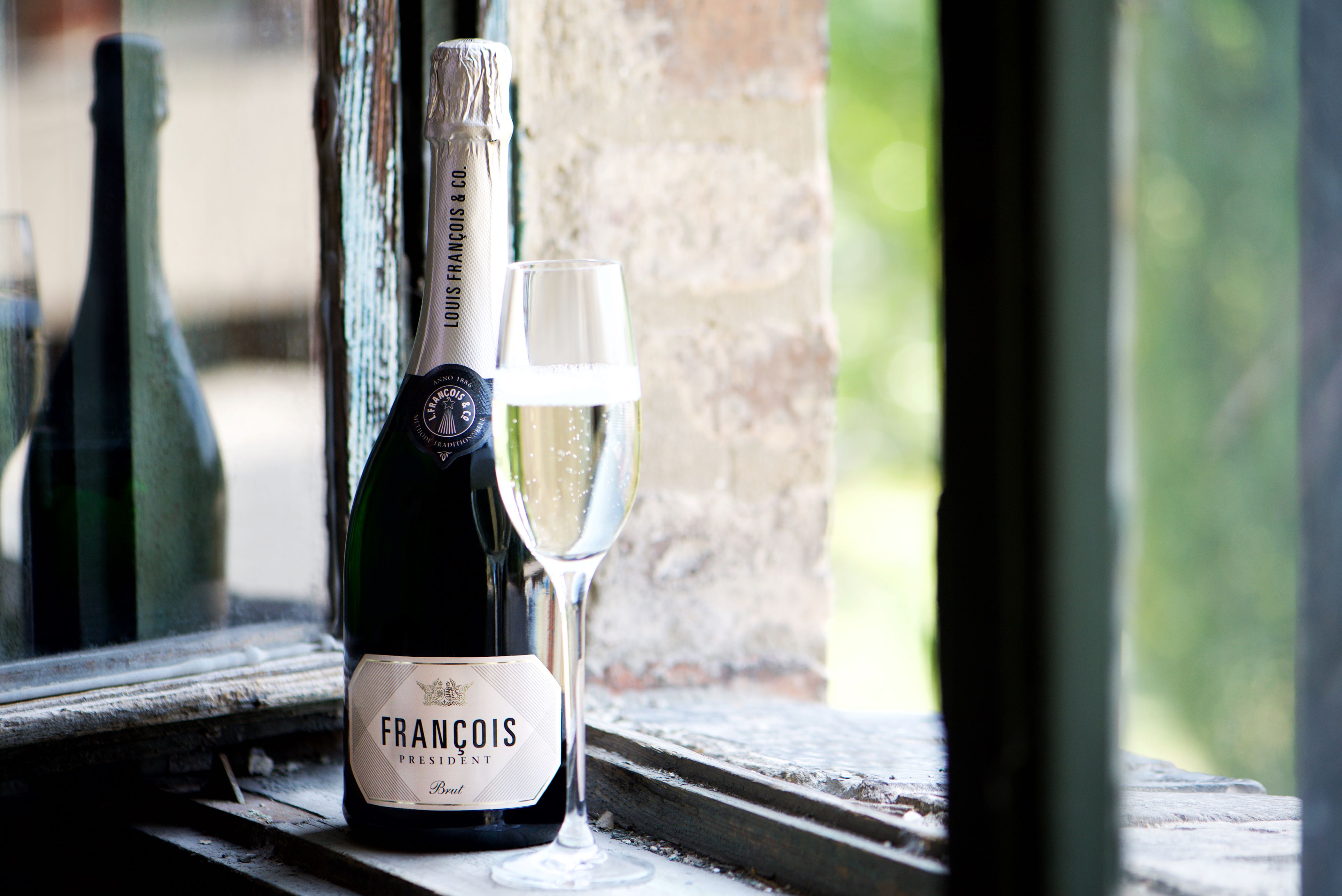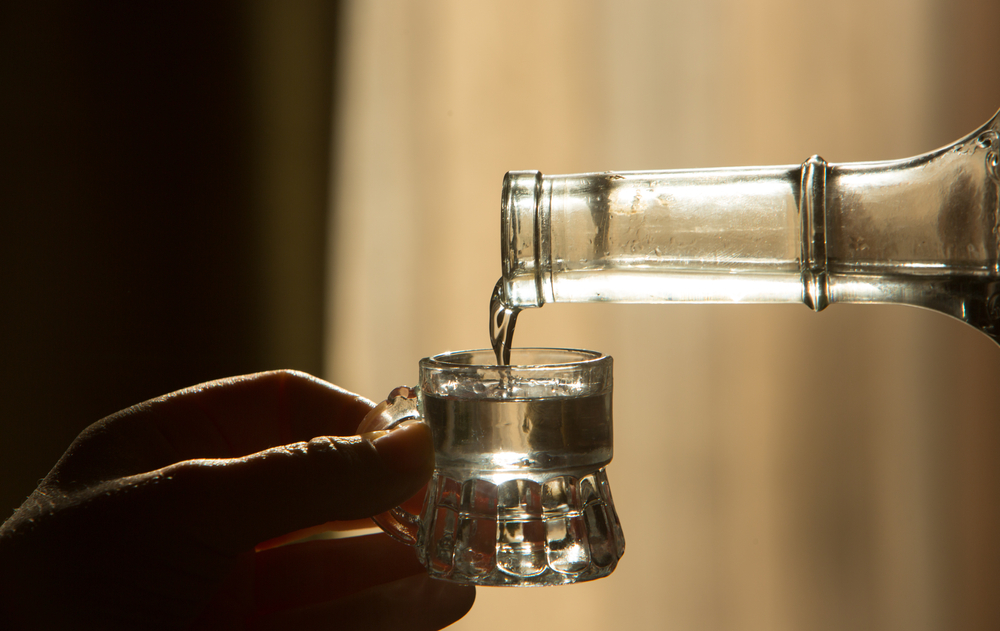Bijou Budapest Wine Tasting in the New Normal
As Hungary continues to reopen, the wine tasting scene is creeping back to life, with smaller events popping up around town. On the evening of May 6, I was delighted to find two bijou tastings to go to within a short hop of one another.
Every Thursday, Tábla Natúr Borbár és Bolt (Natural Wine Bar and Shop), at Dohány utca 29 in District VII, offers a flight of five wines from the “Szofi by nature” selection, put together by owner Zsófi Kékedi.
The flight of five I tried cost HUF 3,500 for 0.5 dl of each and featured two and a half Hungarian wines; more on that later. As a foreigner who had received the first COVID vaccination but not the immunization card (see our story dealing with this on page five), my only option was to sit out on the tiny terrace, which was pleasant enough as the rain had stopped for the day.
Natural wine, which is usually made from organically or biodynamically grown grapes (as all the wines featured in this article were), is a sometimes confusing and polarizing concept. Its detractors dismiss it due to its assumption that “conventional” wines all undergo too high a level of intervention when, in fact, many of the best wines do not.
Others would say interventions in the winemaking process were invented for a reason and make the wine what it is; something clean and stable, as well as more complex and layered than simple fermented fruit juice.
Advocates speak of purity and articulating the terroir in the truest sense. Tokaj winemaker Dorka Homoky told the Budapest Business Journal that she sees a minimalist natural approach as the best way to make wine that conveys the essence of the grape’s place of growth.
Homoky’s Dongó Furmint 2019, which comes from the Tokaj town of Tállya (221 km northeast of Budapest by road), is from grapes picked at the end of September and selected by hand, then spontaneously fermented in the tank; no surprises thus far.
On the Lees or Not?
What makes this wine distinctive is that, after the full-bunch pressing (which requires perfectly ripened bunches to avoid green flavors from the stems), half of the fermented wine was kept in the tank and not racked.
This meant it was kept “on the lees,” in other words, the sediment left over after fermentation was left with the wine. It is usual to draw the liquid off these “gross lees” to avoid the wine being spoiled with off-flavors as it interacts with it. Aging the wine after racking on its “fine lees” is often considered beneficial.
However, Homoky said that the quality of the juice from the full-bunch pressing was so good that it didn’t leave much sediment and was effectively like fine lees. The other half of the wine went into new oak for two months. The two parts were then blended and bottled with the lees. It was neither filtered nor fined.
This wine oozed pear, pineapple, and grapefruit juice on the nose and palate, and was zesty (with focused acidity) and creamy simultaneously, with a nice hint of oak helping bring a touch more weight. It was very pure and tasty and certainly captured plenty of the primary notes of the Furmint grape variety. Perhaps more juicy than vinous, but very enjoyable all the same.
It’s a good idea to give the wine a gentle shake before opening to distribute the lees. It was bottled with a tiny amount of 10-15 grams of sulfur per liter. This naturally occurring chemical has been added to wine for centuries to keep it fresh by preventing it from oxidizing prematurely, but minimizing or even eradicating sulfur is central to the natural wine approach.
From Szent György hegy in the Badacsony wine region, next to Lake Balaton, the Szászi winery decided to dispense with sulfur altogether for the first time in its Zeus Narancbor 2020.
This is an orange wine, the now ultra-trendy but, in fact, ancient style whereby white grapes are fermented on their skins as red wines are, instead of being pressed before fermentation starts, as in the case with most white.
This wine was fermented spontaneously for 16 days on the skins, then aged in stainless steel tanks for half a year, and was left unfiltered and unfined. Many orange wines can become bitter because of prolonged contact with the skins. Still, there was no sign of that here, just a pleasant tanginess to the tannins, along with exciting notes of Eastern spices, peach, apricot, sweet pipe tobacco and ginger.
Mercurial Merlot
The aforementioned half-Hungarian wine was a mercurial Merlot from Rheinhessen in Germany, Bianka und Daniel Schmitt’s Piros ’19. The name reveals a Hungarian connection, which turns out to be Bianka, who is Hungarian.
Over at the Tasting Table Shop & Cellar at Bródy Sándor utca 9 & 22, the Taste Hungary team has launched the Bródy Borműhely, a pop-up wine bar. It will explore different wine-related themes every Thursday at its newly renovated cellar. For now, non-immunization cardholders can sit on benches outside (an application for a terrace has been submitted).
May 6 featured the wines of the Bussay Cellar from the lesser-visited Zala wine region, located in Csörnyeföld (246 km southwest of Budapest, beyond Lake Balaton), nestled very close to the Croatian and Slovenian borders, where the River Mura moderates the climate.
The late László Bussay, a noted figure in the post-transition development of Hungarian wine and who also served as a doctor in villages in Zala County, established the winery. The wines are now made by his eldest daughter, Dóra, in tandem with her husband, the highly talented Somló vintner Tamás Kis, who also makes his own wines under the name of Somló Vándor.
Bussay Charmes Pinot Noir 2017 comes from a hillside of deep clay overlooking the River Mura. It was fermented in open vats, then aged for a year in old barrels. It comes from a clone with cherry, red fruit compote, and earthy aromas and flavors, and a nice pinch of spiciness that gives a local touch to this otherwise varietally pure and rather Burgundian Pinot Noir.
It is light- to medium-bodied with restrained tannins, but deep in flavor, and has good length. Pinot Noir was the first “black” grape to be planted by the family. This wine was 24th in the “Top 30” reds list the British-based “Decanter” magazine put together for its recently published guide to Hungarian wine.
Bussay’s delightfully light and playful Csókaszőlő, a once almost extinct but now resurgent indigenous black grape, was 26th on the same list.
This article was first published in the Budapest Business Journal print issue of May 21, 2021.
SUPPORT THE BUDAPEST BUSINESS JOURNAL
Producing journalism that is worthy of the name is a costly business. For 27 years, the publishers, editors and reporters of the Budapest Business Journal have striven to bring you business news that works, information that you can trust, that is factual, accurate and presented without fear or favor.
Newspaper organizations across the globe have struggled to find a business model that allows them to continue to excel, without compromising their ability to perform. Most recently, some have experimented with the idea of involving their most important stakeholders, their readers.
We would like to offer that same opportunity to our readers. We would like to invite you to help us deliver the quality business journalism you require. Hit our Support the BBJ button and you can choose the how much and how often you send us your contributions.







